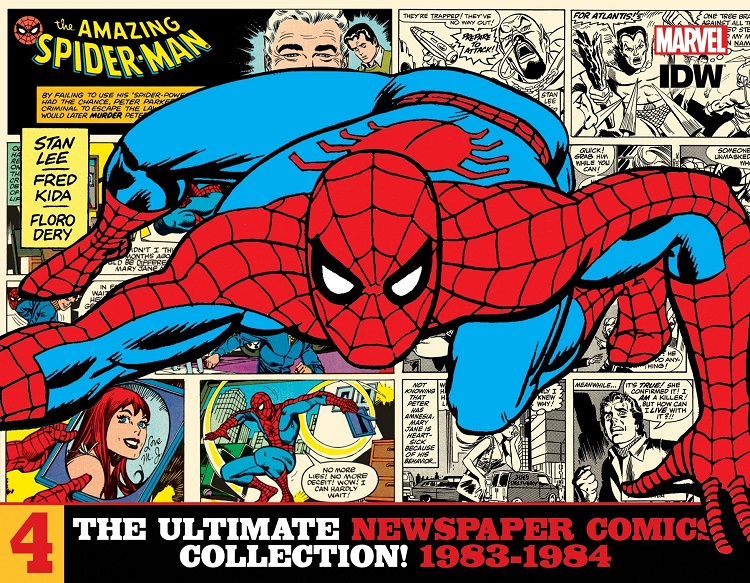
With Fred Kida in control on daily art duties, Stan Lee started his writing chores in 1983 with nearly four months of strips featuring the first Spidey strip appearance of Namor, the Sub-Mariner. Not only did Namor largely take over the strip, the setting also moved from New York City to the Bermuda Triangle, putting Spidey well outside his urban comfort zone. The far-fetched tale found Peter Parker’s noted tightwad boss J. Jonah Jameson funding the trip to the Triangle for a story on disappearing ships, leading to Spidey’s lengthy encounter with Namor and their common enemy, Warlord Krang.
After the conclusion of the Namor arc, Spidey returns home to discover that his beloved Aunt May appears to be a criminal, albeit involved in fairly insignificant crime such as mail theft. Obviously, Aunt May could never be a master criminal, making the ridiculous premise largely a waste of time, especially as it dragged on for weeks of the strip’s run. Elsewhere, Spidey investigates crimes in arcades, clearly marking the era of the strips. He also suffers amnesia in a tale seemingly crafted just to burn through the days.
Peter finds his affections divided throughout this book, as he’s alternately enamored with his main squeeze Mary Jane Watson as well as competitors Dolly Norbert and Maggie Manton. All of the romance left me cold, as Peter should be portrayed as an everyman lucky to have one girlfriend, not a lothario attempting to juggle three. Also, the focus on the girls in his life means less time for battling baddies, making the book heavy on Peter Parker but light on Spider-Man.
Although Lee is credited as the writer of the strips in this collection, a title he continues to hold to this day (!), the introduction to this book reveals that he stepped away from the plot chores early in the run and instead crafted dialogue for the stories created by other writers, including the now-legendary Jim Shooter. By the time of the strips collected in this book, the plotting had fallen to the Marvel bullpen, with no definitive record of the origin of the book’s subpar tales. Lee’s scripts for this collection still sparkle with his undeniable wit, but the strip was let down by some severely lazy plots. It really shouldn’t be that hard to set Spidey up against a super-powered baddie of the month, but the bullpen apparently failed to follow the blueprint laid down by Lee in Spidey’s comic book run.
Kida continued as full-time artist through only the first month of this collection, yielding the Sunday reins to new arrival Floro Dery as of January 30th, 1983. Dery’s style was a distinct departure from Kida’s, with a cleaner, more fluid look that signaled a modern approach compared to Kida’s classic Romita-esque lines. The change threw me for a loop at first, but Dery’s unique take eventually grew on me. Kida left the strip for a sabbatical in April 1984, leaving the Monday-Saturday art chores to unnamed bullpen artists for the latter part of this book. They mostly managed to competently mimic Kida’s style, making the interruption largely unnoticeable.
The strips look better than ever in IDW’s deluxe hardcover collection, part of their ongoing Library of American Comics preservation project. While the stories presented in this book have their shortcomings, the art and dialogue still make them worthwhile reading for fans.